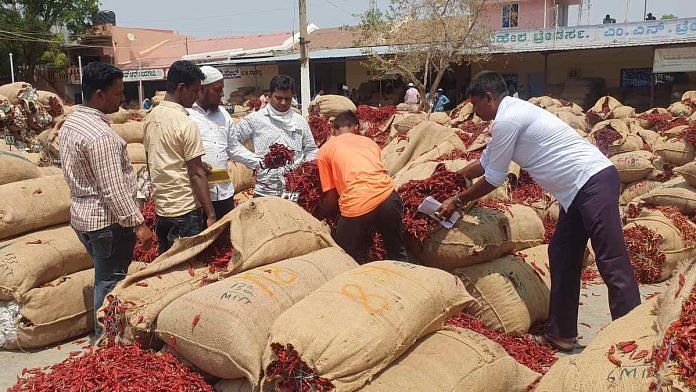Byadgi/Haveri: Around 50 policemen in full riot gear line up under a lone tree, seeking refuge from the scorching sun. The pungent sting of chillies hangs thick in the air, causing their eyes to water. Just a few metres away, shards of glass and blackened ash are all that remain of a police jeep torched in the violence that broke out at one of India’s largest chilli markets in Byadgi, some 300 kilometres from Bengaluru.
Here, hundreds of thousands of bags of red chillies from Ballari, Raichur, Yadgir in Karnataka, as well as from Kurnool, Guntur, and other parts of neighbouring Andhra Pradesh and Telangana are auctioned to wholesalers. But it’s not business as usual—not since 11 March when news of a drastic price drop led to a mob of around hundred farmers going on a rampage. They torched police jeeps, attacked a fire truck, assaulted police personnel and pelted stones on the Agriculture Produce Marketing Corporation (APMC).
“On market days (Monday and Thursday) there are just about 10 policemen present here. But the day after the violence, over 800 security personnel were moved here,” said a senior police officer. “We now have around 100 police personnel and a routine market day is now seen as a huge security challenge.”
The violence reveals how volatile Byadgi Chilli Market is. And now, everyone’s on edge. It’s a reflection of the deepening agrarian crisis in Karnataka, which is facing a double drought. Despite seasonal vagaries, farmers often follow a pattern of growing crops that fetched good prices in the previous year, increasing investments and acreage in the hope of even better profits. This gamble can either fetch them very high returns or further drown them in debt.

At Byadgi Chilli Market, this has been both a season of abundance and disappointment.
On the one hand, the volumes of chilli being grown and sold have never been higher. “In 2022-23 around 9.90 lakh quintals of chilli were traded here. This year we are expecting around 25 lakh quintals by the end of the season (April),” said HY Satish, the secretary of the Byadgi APMC. But on the other hand, there’s been a decline in quality. With at least 40 per cent of last year’s stock still in warehouses, most of it poor in quality due to low rainfall and rising temperatures, prices are volatile. Suddenly, the once profitable chilli-growing business is tottering.
Last year, I got around Rs 60,000 for 2043 [a chilli variety, per quintal]. In December 2023, it was Rs 24,000, but now it is at around Rs 12,000.
-Eknath Reddy, Ballari farmer
A couple of days after the unprecedented violence and 88 arrests, three lakh bags of bright chilli have arrived, neatly stacked up for traders to inspect.
The 75-acre market in Karnataka’s Haveri district, famous for selling some of the most exquisite varieties of chilli for about a quarter of a century, is now a fortress. Traders and farmers go about their business cautiously, mindful of a platoon of Central Reserve Police Force personnel conducting a flag march to remind troublemakers of their presence. The policemen look fierce, but even they fail the battle to hold back sneezes against the acrid air.
District officials attribute the violence to “misinformation”. While government authorities insist that prices only dropped by Rs 2,000, a section of farmers allege it was by around Rs 30,000.
Also Read: ‘Yams over grenades’ in Assam. Samir Bordoloi & his green commandos make farming cool again
Doubled yield, dropping profits
As the police keep watch, traders carrying small clipboards walk around heaps of sacks that are neatly classified as ‘lots’. At least one sack in each pile is cut open for traders who dig deep to feel and smell and smell the chillies. They look at factors such as pungency, moisture content, redness, size, and shape to determine the price.
The traders jot down the prices, which they don’t share with anyone, not even the farmer. By noon, they enter this information into the APMC software and the highest bidder gets the lot. But this season, prices have been fluctuating and the bids have been low.
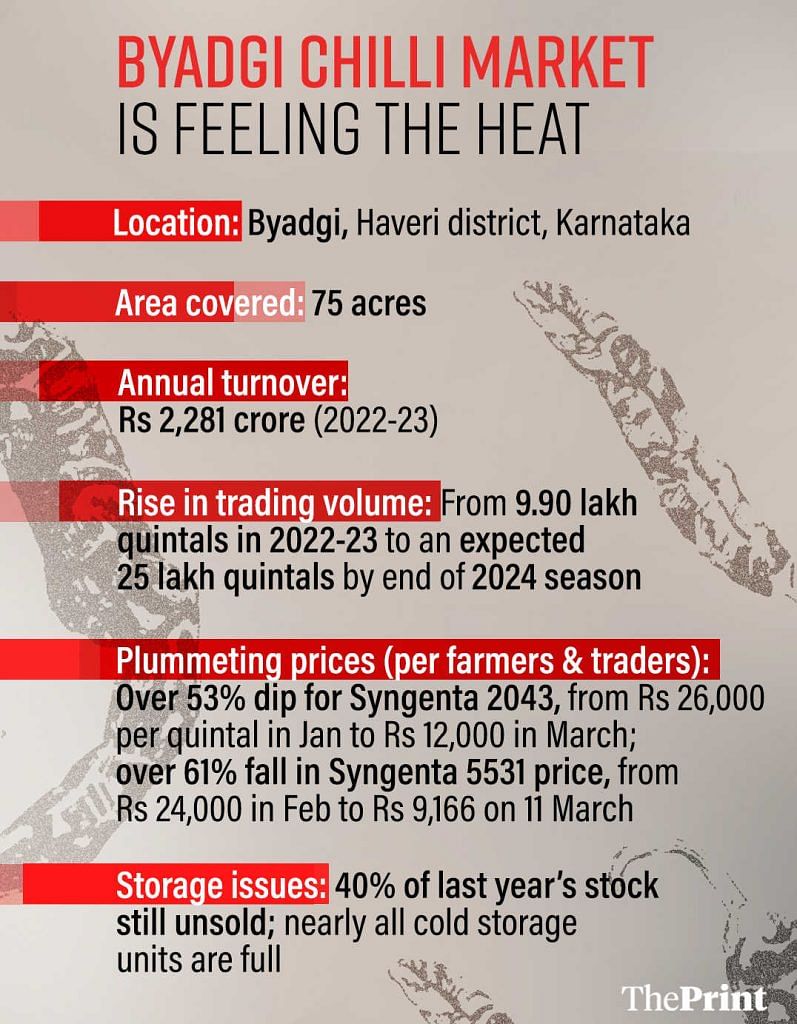
The promise of higher prices, better labour, and an organised trading experience attracts farmers, exporters, food processing units and other stakeholders to Byadgi. However, the good prices last year enticed more people to take up red chilli farming and prices have dropped.
In January, the Syngenta 2043 variety of chilli was sold at Rs 26,000 per quintal, but a week ago, the price had dropped to Rs 12,000, say traders and farmers.
Eknath Reddy, a farmer from Ballari, invested Rs 10 lakh last year and earned 20 lakh revenue. Buoyed by the profits, he increased his investment, but the revenue has remained similar despite an increase in yield.
“I grow chilli on around 8 acres. Yield has been good but investments have gone up,” he said. “Last year, I got around Rs 60,000 for 2043 [a chilli variety, per quintal]. In December 2023, it was Rs 24,000, but now it is at around Rs 12,000. It’s a 50 per cent dip and it’s not working out for us.”
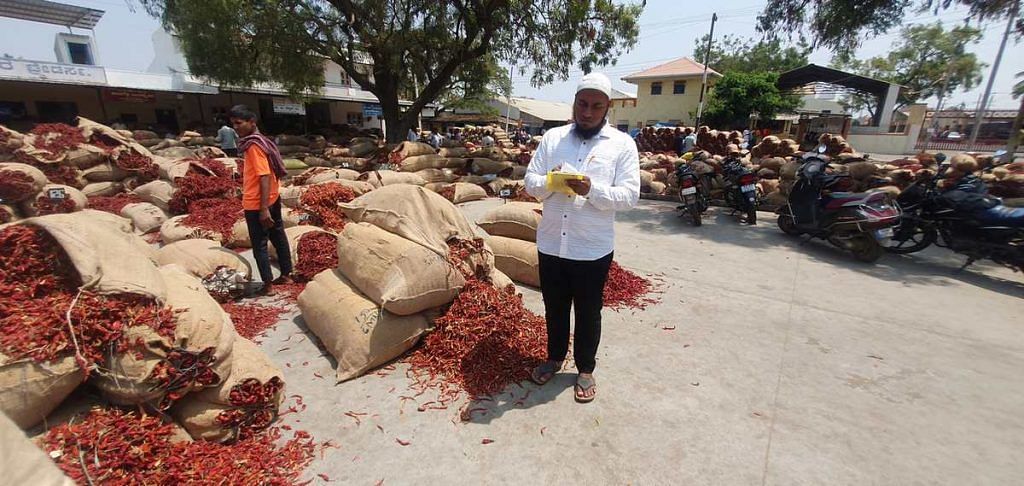
Reddy harvested roughly 600 bags overall, translating to around 24 quintals per acre as against 13 quintals the previous year.
But farmers are aware that the quality and price of the produce drops with subsequent pickings. The first picking always fetches a higher price, and by the second or third harvest in March, it can drop by 60-70 per cent.
The chilli market is known for the GI-tagged Byadgi Kaddi and Byadgi Dabbi varieties. The Byadgi chilli has distinctive properties, with its oil and oleoresins also used to make medicines and cosmetics like lipsticks and eyeshadows. This produce as well as other varieties are exported to China, USA, Thailand, Spain, and Malaysia, among other countries. Several major spice brands, including Eastern, MDH, and Aachi, source raw materials directly from Byadgi.
If a farmer accepts the winning bid from a trader, the payment is made within a couple of days. Commission agents, who act as intermediaries between farmers and traders, charge about two per cent of the revenue. Farmers who are willing to wait for better prices either hold off the sale for another day or store their produce in any of the private cold storages.
But there is no space to store the produce—the warehouses are full.
Over 50 varieties of red chillies, including Biligai, Guntur, and Syngenta 2043, are sold in Byadgi. They look the same to the untrained eye, but differ in quality, pungency, and size.
No cold comfort either
Compared to the scorching 44 degrees Celsius outside, the Chatrad Cold Storage, barely 500 metres from Byadgi Chilli Market, is a chilly haven. But it has run out of space. The air-conditioned facility is filled with thousands of sacks of red chillies, and now there’s no room to store even one more.
“We have a capacity of around one lakh sacks, and at least 40 per cent of last year’s stock is still inside. This year, production has increased nearly three-fold and there is no place to store the produce,” said Malthesh Chatrad, the 43-year-old owner of the cold storage.
Over 50 varieties of red chillies, including Biligai, Guntur, and Syngenta 2043, are sold in Byadgi. They look the same to the untrained eye, but differ in quality, pungency, and size among other factors. With farmers preferring higher yielding varieties of seed, produce has more than doubled this year. Over the years, a thriving cold storage sector has emerged around Byadgi market, which had a turnover of Rs 2,281 crore last fiscal year. There are currently around 30 cold storage units in the area but almost all are full.
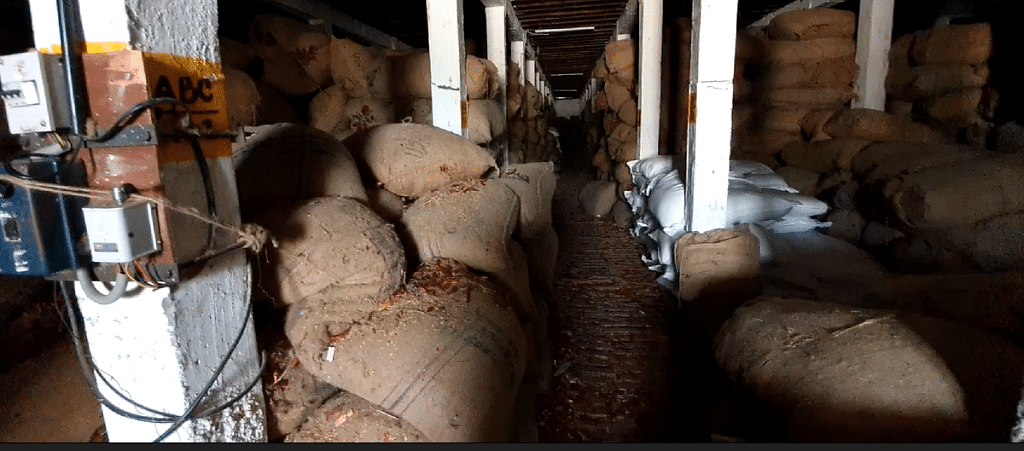
They are also all private, charging around Rs 150 per sack annually, adding to rising costs for farmers, agents, and other stakeholders. There are no government facilities and the APMC is just the facilitator of the business, with no control over determining the price.
Farmers are worried. Without government support or compensation during bad years, the future for farmers in drought-prone Karnataka seems uncertain.
“We cannot continue for long like this,” said Kumaraswamy, a 36-year-old farmer from Ballari.
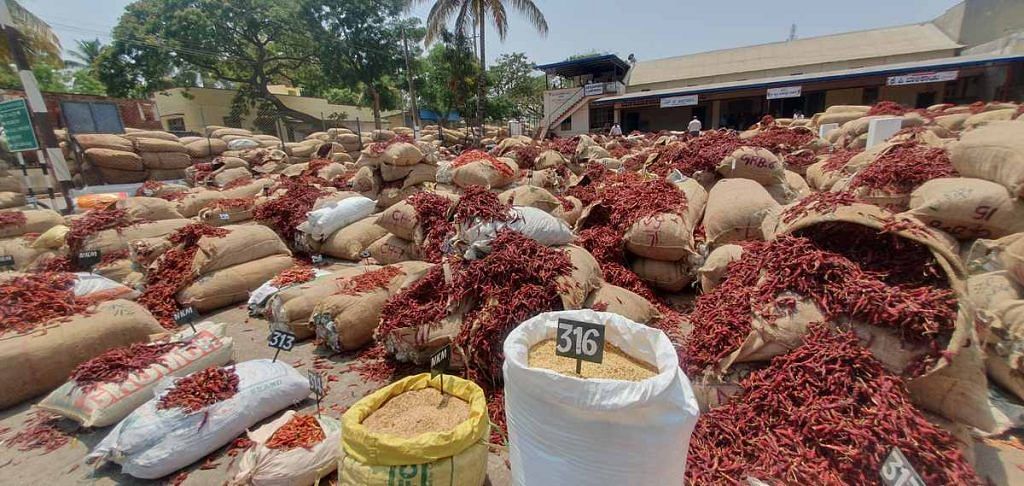
What happened on 11 March
After the rioters were arrested and order was restored, the market jumped back to regular operations—but under heavy security. Around 100 security personnel stand guard outside the APMC office building. The gates to the complex are locked even though the auction has not been cancelled. At least two police vans are stationed inside this complex and a few others at various entry points into the market.
“As soon as the prices were announced, a section of farmers started to charge toward the APMC office. They pelted stones and then started to beat up any official found within the premises of the APMC office. The violence escalated as they breached the gates and set fire to a parked police jeep and then torched even the fire truck that had come to douse the flames,” said a Byadgi official, requesting anonymity.
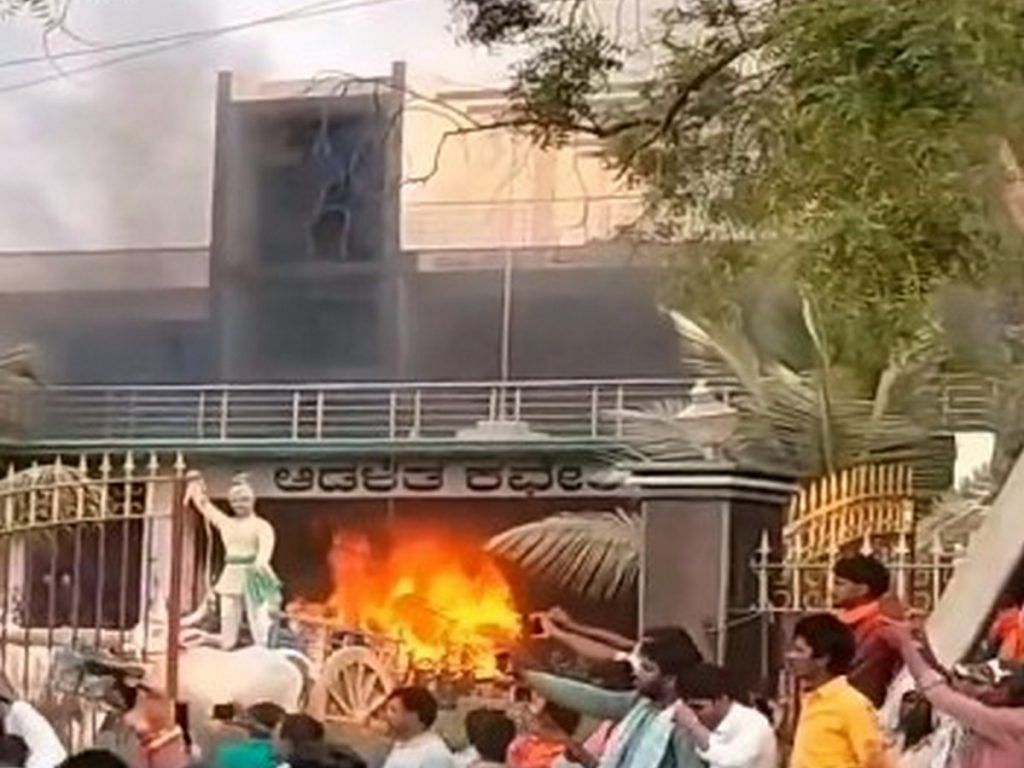
Another official questioned whether the protesters were farmers at all. “Some of them chased security personnel and even urinated on them,” he said. Of the 88 persons arrested, nearly half were from Andhra Pradesh.
District officials attribute the violence to “misinformation”. While government authorities insist that prices only dropped by Rs 2,000, a section of farmers allege it was by around Rs 30,000.
“The Byadgi variety (of chilli) had a price of Rs 50,000-60,000 (per quintal) last year. I agree that what happened on 11 March was a mistake by the farmers, but there is no discussion of why the prices dropped from Rs 50,000-60,000 to just Rs 10,000-15,000,” said farmer Kumaraswamy.
Farmers typically expect fluctuations of Rs 2,000-3,000, or even Rs 5,000, but “a drop of Rs 30,000-40,000” warranted an explanation from the government, he added.
However, Raghunandan Murthy, deputy commissioner of Haveri district, said that comparisons to prices from a month ago are not valid because the produce quality has declined since then.
“The traders’ justification is that the quality has dropped,” he said.
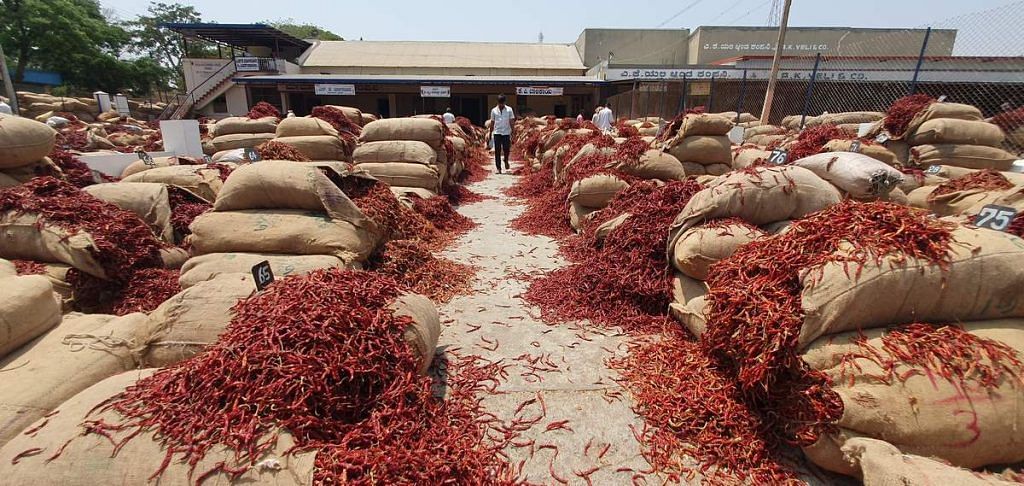
Some farmers justify their outburst by highlighting that the input cost per acre is around Rs 2 lakh, and the prices determined on 11 March meant making huge losses and adding to their growing debt. On the day of the violence, one farmer said that his produce (Syngenta 5531 variety) was given a rate of Rs 9,166 compared to Rs 24,000 he received a month ago.
Suresh Gowda Patil, former MLA and president of the Byadgi Merchants Association, maintained that the perceived sharp dip in prices led to the violence, claiming, however, that he did not know who was involved.
But deputy commissioner Murthy maintains that rumours led to the unrest, insisting that prices dropped by Rs 2,000 because of extra produce. On the day of the violence, around three lakh bags came into the market and a week before it was four lakhs. On average, this market receives around 1.5-2 lakh bags on auctions but higher yields have led to a surge in volume.
Also Read: Bengaluru has a difficult choice—save a 230-year-old stud farm or stay congested
Red and volatile
In an attempt to douse the fires of discontent, state Minister of Textiles, Sugarcane Development and Agricultural Marketing Shivanand Patil met with farmers and APMC merchants at Byadgi on 13 March. The main concern raised was the lack of government intervention or compensation.
Farmers like Kumaraswamy claimed that they are unable to recover their investments due to rising input costs for electricity, pesticides, and so on, while also grappling with the fallout of water not being released from Tungabhadra Dam. They also emphasised the absence of government intervention or compensation for drought-affected crops.
Only green chillies come under the horticulture department, which offers specific benefits. As soon as the chillies turn red…we are at the mercy of the market.
-Byadgi commission agent
Red chillies (along with some other crops) are neither included in the public distribution system nor overseen by the horticulture department. This leaves farmers at the mercy of market forces with little or no government intervention to control volatility of prices like, for example, onions or tomatoes.
Minister Patil assured the AMPC that funds would be provided to repair the damage and expand the market area. He also offered to write to the Union government to bring this produce under the ambit of MSP (minimum support price). But farmers are sceptical—they are well aware that the Food Security Act doesn’t apply to red chillies.
“Only green chillies come under the horticulture department, which offers specific benefits. As soon as the chillies turn red, we are bracketed under the larger agriculture department umbrella,” said a commission agent. “And when it’s red, we are at the mercy of the market.”


